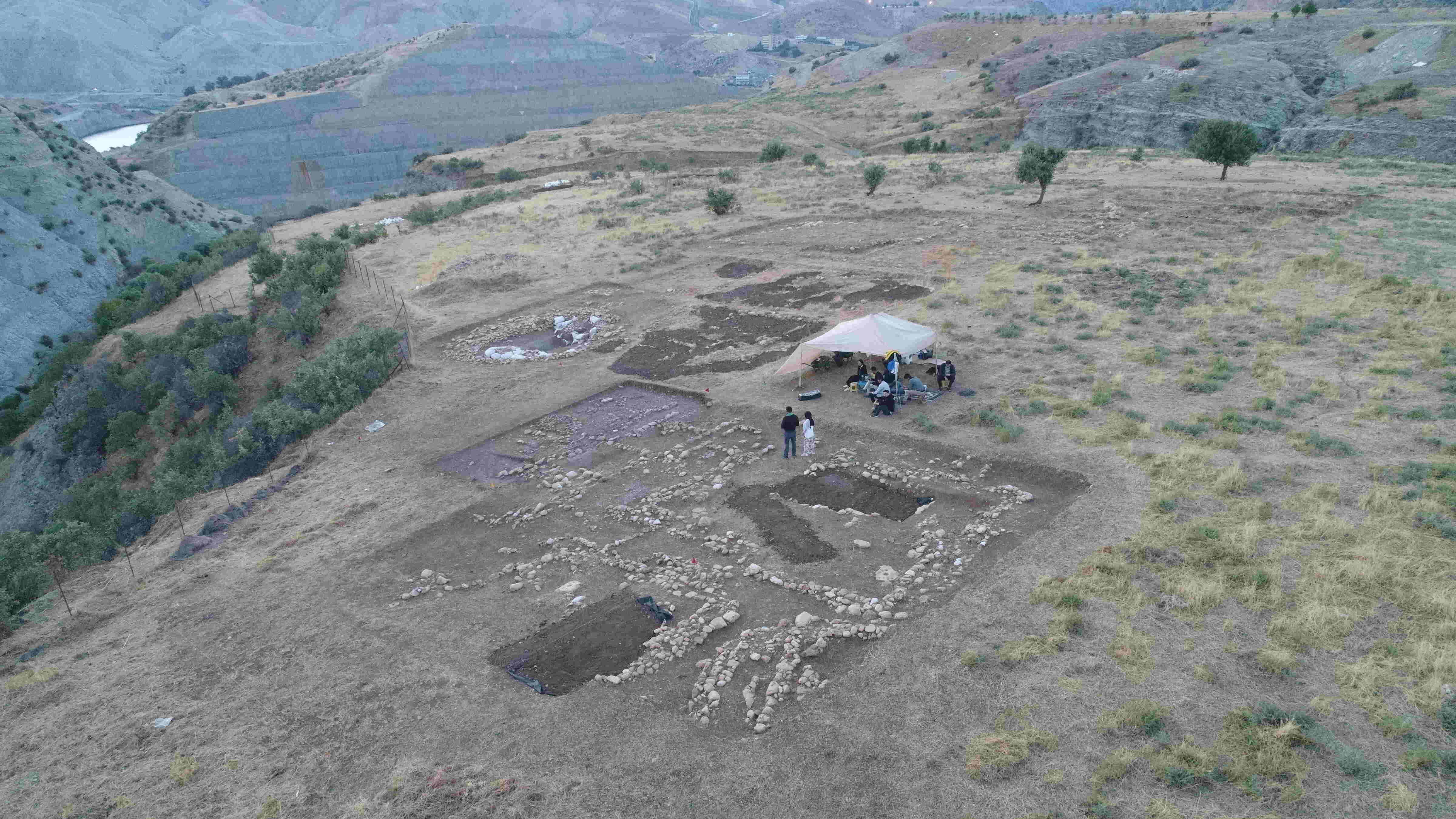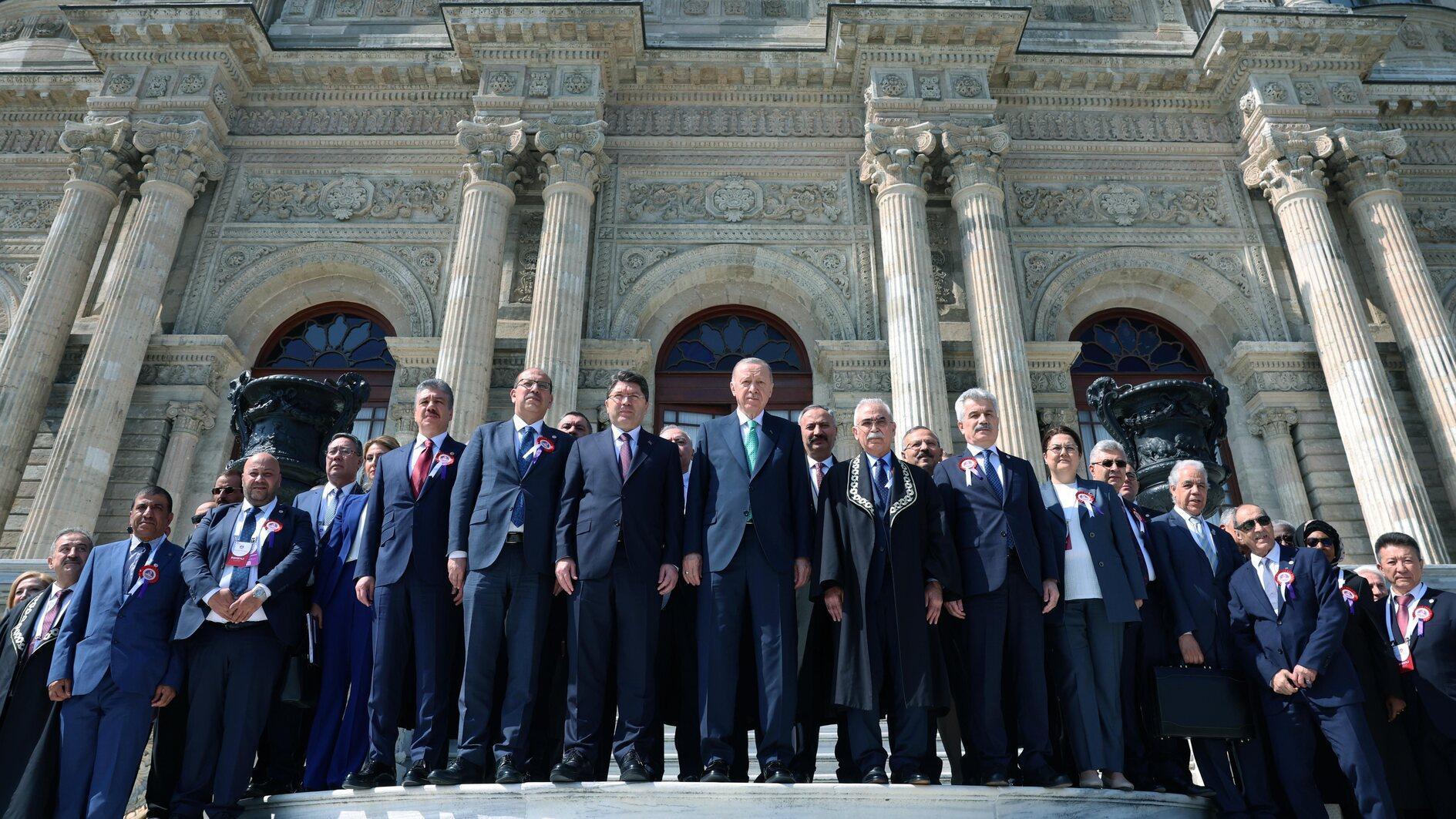Mardin's Boncuklu Tarla unveils 12,000 years of history
MARDİN

Boncuklu Tarla (Beaded Field), located in the Ilısu neighborhood of the southeastern province of Mardin's Dargeçit district, sheds light on human history with its 12,000-year-old past.
Archaeological excavations in Boncuklu Tarla, initiated in 2012 by the Mardin Museum Directorate have been continuing and led by Associate Professor Ergül Kodaş, a faculty member in the Department of Archaeology at Mardin Artuklu University. The region, which has hosted 25 civilizations throughout history, including Sumerians, Akkadians, Babylonians, Hittites, Assyrians, Urartians, Romans, Abbasids, Seljuks and Ottomans, continues to reveal ancient human life.
So far, numerous findings from the Late Epipaleolithic period to the Neolithic Age have been unearthed at Boncuklu Tarla, which covers approximately 2.5 hectares. More than 200 skeletons from graves, along with over 200,000 beads, have been uncovered, as well as structures such as houses, public buildings and special-purpose constructions.
Culture and Tourism Provincial Director Ayhan Gök said the beads that gave the site its name are already on display in the museum.
Kodaş mentioned that Boncuklu Tarla was discovered during surface surveys conducted in 2008 as part of the Ilısu Dam and Hydroelectric Plant (HES) project. He stated that the site was given excavation status by presidential decree in 2021 and is now included in the Heritage for the Future Project.
Discoveries push back the timeline
Kodaş noted that the surface surveys suggested the site could date to the Pre-Pottery Neolithic period between 10,000 and 8,000 B.C. However, excavations have revealed that the timeline extends 1,000 years earlier, indicating that Boncuklu Tarla was inhabited not only during the Neolithic Age but also in the Late Epipaleolithic period, just before it.
The site has numerous public buildings referred to as "temples," over 200 skeletons, more than 200,000 beads, stone walking sticks, stone vessels and bones typical of the period. Kodaş added that the findings indicate the possibility of even earlier occupation, although they have yet to reach the bedrock where the earliest settlement occurred.
The layer dated to the 11th B.C. is the oldest they have identified so far, and there is another layer beneath with limited information. Kodaş added that it may lead to findings from as early as the 12th B.C.
He emphasized that similar excavations are taking place at other sites from the same period and that they are like pieces of a puzzle coming together.
He added that Boncuklu Tarla stands out as one of the settlements in Southeastern Anatolia where cultural and technical changes took place as humanity transitioned to a settled, agricultural lifestyle.
“Boncuklu Tarla has distinctive characteristics that provide new information we previously couldn’t understand or identify," Kodaş said.
"For example, the use of copper goes back as far as 8,500 B.C., which shows that it was used more extensively than we previously thought. The bull-shaped animal motifs we see in the Şanlıurfa region, rather than being used on objects, stone stelae or benches, were used in Boncuklu Tarla in a portable form as beads. This provides new information can be obtained that we hadn’t considered before. Together with other settlements, Boncuklu Tarla helps us rewrite history about this period,” he added.
With the support of the ministry and the governor's office, Kodaş said that their work at Boncuklu Tarla will continue to shed light on the region's ancient past.
















